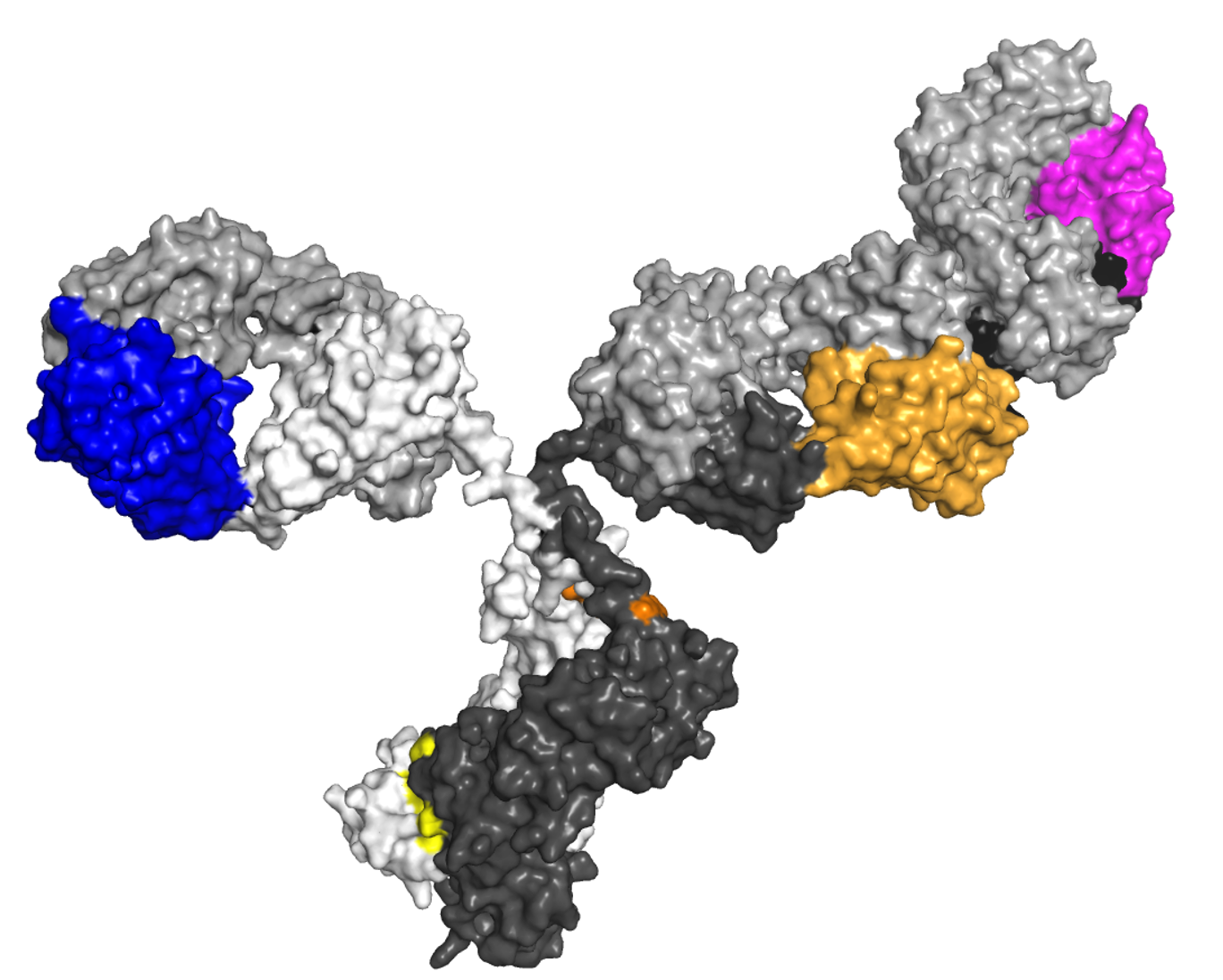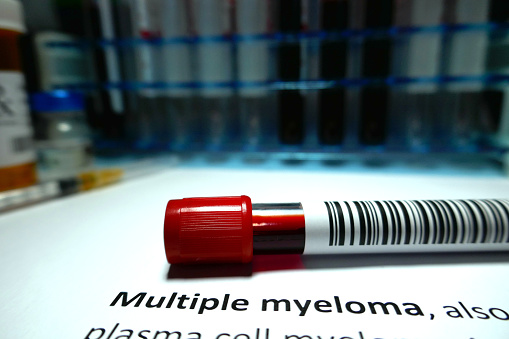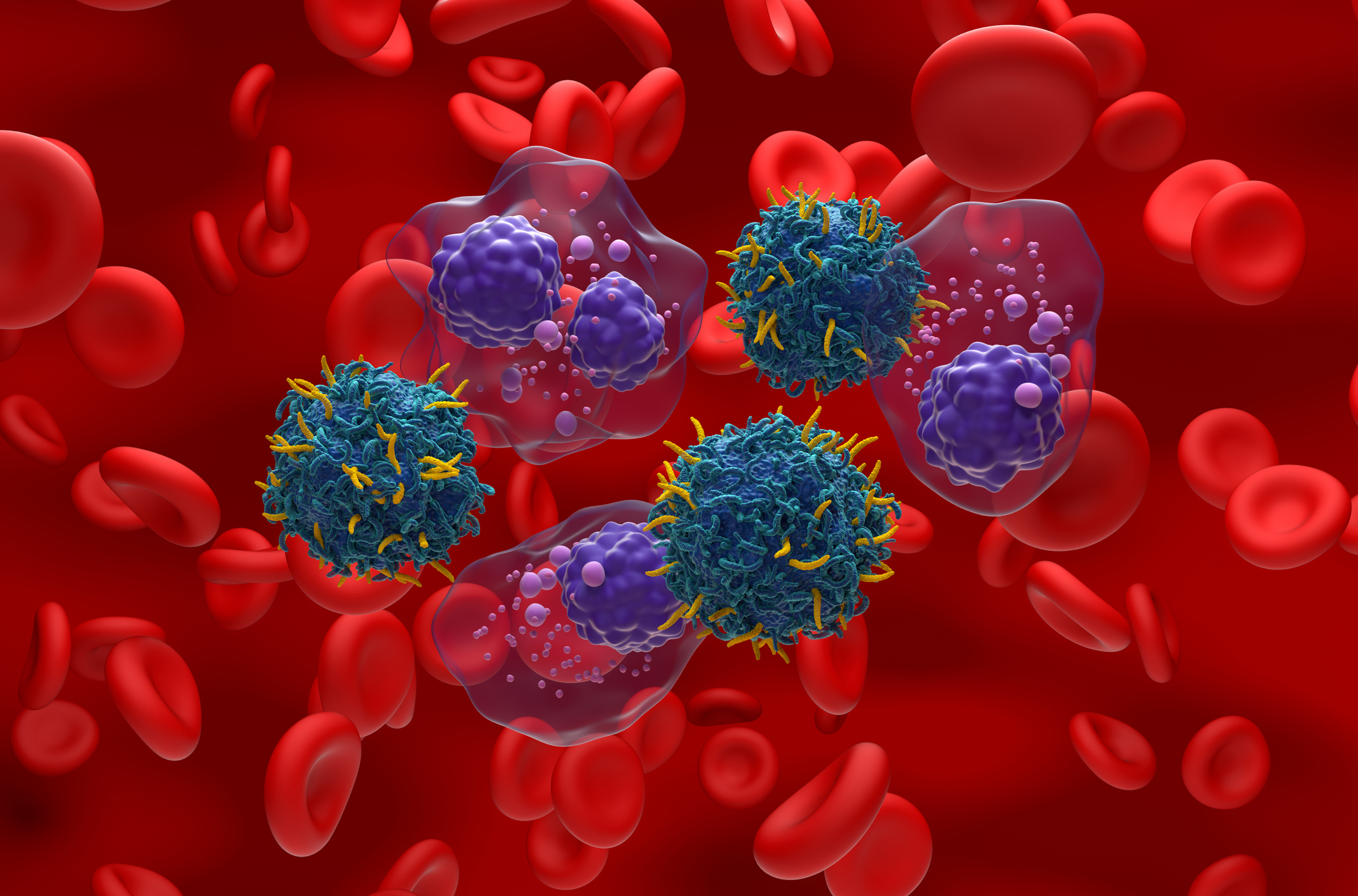
At first glance, it seems very simple: the presence of a deletion of the short arm of chromosome 17 (del[17p]) confers a poor prognosis for multiple myeloma patients. This has been known for many years and forms the basis of the Revised International Staging system (R-ISS),1 along with the presence of a t(4;14) and/or t(14;16), and high serum lactate dehydrogenase (LDH), low serum albumin, and high serum β2-microglobulin. A number of recent publications, however, have shown that it is not quite as straightforward as it seems and, as with many things, the devil is in the detail.

The percentage of myeloma cells with del(17p) by fluorescent in situ hybridization (FISH), or if performed by sequencing, the clonal cancer fraction (CCF), has a major impact on outcome. FISH tests are usually reported as positive or negative, depending on a predefined cut-point initially determined on normal cells and often set at 2-5%. The presence of tumor heterogeneity is now well-recognized and over the years, different collaborative groups have recommended different cut-points for the presence of del(17p), with clinical significance ranging from >20% to >60% of affected cells.
A recent study performed by Thakurta and colleagues2 utilized data from 1273 newly diagnosed multiple myeloma cases and demonstrated that the survival of cases decreased as the percentage of cells with del(17p) increased. They segmented cases by the percentage of abnormal cells, using increments of 10% between 30% to 80% abnormal cells, and they found that the optimal threshold for predicting a very poor outcome was between 55% and 64%. This represents approximately 8% of myeloma cases. When outcomes were stratified by a 55% threshold, cases with lower values had significantly longer overall survival (OS) and progression-free survival (PFS) compared with those with higher values (median OS, 84.1 vs 36 months and median PFS, 23.9 vs 14.3 months, respectively).
The presence of TP53 mutation (TP53mut) is also important. Walker and colleagues3 reported that mutations occur in approximately 3% of newly diagnosed cases and cases with TP53mut have a significantly poorer PFS compared with wild type (wt) cases (median 13.7 vs 26.9 months, P<0.001). Thanendrarajan and colleagues4 found a significant correlation between TP53mut and del(17p), with the odds of having TP53mut increasing by 1.3-fold when there was a 10% increase in the percentage of cells carrying del(17p) (P=0.04). Corre and colleagues5 extended these findings and showed that the mutation was more frequent (approximately 30%) when cases had del(17p) in 60% of cells. Cases with del(17p) and TP53mut, i.e., biallelic inactivation of TP53, had a particularly poor outcome.
Given the co-occurrence of del(17p) and TP53mut, there is some debate about whether the poor outcome is due to the actual percentage of cells with the deletion or the presence of the mutation. In the largest series reported to date (no del[17p], n = 2505; del[17p]/TP53wt, n = 76; and del[17p]/TP53mut, n = 45),5 the cases with the worse outcome were those with del(17p)/TP53mut (median OS, 36.0 months; median PFS 18.1 months), whereas cases with del(17p)/TP53wt had an intermediate outcome (median OS, 52.8 months; median PFS, 27.2 months) compared with the best outcome in those without either abnormality (median OS 152.2 months; median PFS, 44.2 months).5
It is important to remember that other copy number abnormalities within the myeloma genome interact with del(17p) and contribute to prognosis. For example, Boyd and colleagues6 demonstrated that the presence of adverse chromosome translocations [t(4;14), t(14;16), t(14;20)] and 1q gain or amplification increased risk. They defined a favorable risk group by the absence of adverse genetic lesions, an intermediate group as one with one adverse lesion, and a high-risk group by the co-segregation of more than one adverse lesion. More recently, Walker and colleagues7 described a group of cases, referred to as “double-hit,” with a particularly poor prognosis. This high-risk subgroup was defined by either a) bi-allelic TP53 inactivation or b) amplification (≥4 copies) of 1q21 on the background of ISS Stage III, and comprised 6% of the population (median PFS, 15.4 months; median OS, 20.7 months).3
Thanendrarajan and colleagues4 also looked at the role of 17p in the context of high-risk defined by gene expression profiling (GEP)-70. They noted that the presence of del(17p) in more than 20% of cells was identified more than twice as frequently in GEP-70 high-risk patients compared with low-risk patients (21% vs 8%). In addition, the cut-point for clinical significance differed between the GEP-70 high- and low-risk groups. Consistent with the data from Thakurta2 and Corre,5 in the low-risk group a cut-point of 60% was associated with significantly impaired outcome compared with cases with a lower percentage of del(17p) positive cells (3-year OS, 73% vs 87%, P=0.002; 3-year PFS, 64% vs 81%, P=0.004). In the GEP high-risk cases, the prognostic importance of the cut-point was not seen, as high-risk cases with del(17p) in more than 20% of cells had a worse clinical outcome than cases without del(17p) (3-year OS, 62% vs 26%, P=0.007; 3-year PFS, 45% vs 17%, P=0.07), and this was consistent across all cut-points.
In conclusion, prior to assigning risk in multiple myeloma, it is essential to look for the presence of del(17p), and to quantify the number of cells carrying the abnormality, and to take into account bi-allelic inactivation (through homozygous deletion or concurrent mutation), and GEP-defined risk status, if possible. Importantly, cases with 17p abnormalities in less than 60% cells may not actually be clinically high-risk and other factors need to be considered. On the other hand, a combination of del(17p) and mutation can define a group of patients with a dire prognosis despite modern therapies that should be considered for novel therapeutic approaches.
Dr. Faith Davies is Director of the Myeloma Clinical Program at Perlmutter Cancer Center, NYU Langone Health and Professor of Medicine, NYU Grossman School of Medicine, New York
References
- Palumbo A, Avet-Loiseau H, Oliva S, et al. Revised international staging system for multiple myeloma: A report from International Myeloma Working Group. J Clin Oncol. 2015;33(26):2863-2869. DOI: 10.1200/JCO.2015.61.2267
- Thakurta A, Ortiz M, Blecua P, et al. High subclonal fraction of 17p deletion is associated with poor prognosis in multiple myeloma. Blood. 2019;133(11):1217-1221. DOI: 10.1182/blood-2018-10-880831.
- Walker BA, Boyle EM, Wardell CP, et al. Mutational spectrum, copy number changes, and outcome: results of a sequencing study of patients with newly diagnosed myeloma. J Clin Oncol. 2015;33(33):3911-3920. DOI: 10.1200/JCO.2014.59.1503
- Thanendrarajan S, Tian E, Qu P, et al. The level of deletion 17p and bi-allelic inactivation of TP53 has a significant impact on clinical outcome in multiple myeloma. Haematologica. 2017;102(9):e364-e367. DOI: 10.3324/haematol.2017.168872
- Corre J, Perrot A, Caillot D, et al. del(17p) without TP53 mutation confers a poor prognosis in intensively treated newly diagnosed patients with multiple myeloma. Blood. 2021;137(9):1192-1195. DOI: 10.1182/blood.2020008346.PMID: 33080624
- Boyd KD, Ross FM, Chiecchio L, et al; NCRI Haematology Oncology Studies Group. A novel prognostic model in myeloma based on co-segregating adverse FISH lesions and the ISS: analysis of patients treated in the MRC Myeloma IX trial. Leukemia. 2012;26(2):349-355. DOI: 10.1038/leu.2011.204
- Walker BA, Mavrommatis K, Wardell CP, et al. A high-risk, Double-Hit, group of newly diagnosed myeloma identified by genomic analysis. Leukemia. 2019;33(1):159-170. DOI: 10.1038/s41375-018-0196-8






 © 2025 Mashup Media, LLC, a Formedics Property. All Rights Reserved.
© 2025 Mashup Media, LLC, a Formedics Property. All Rights Reserved.